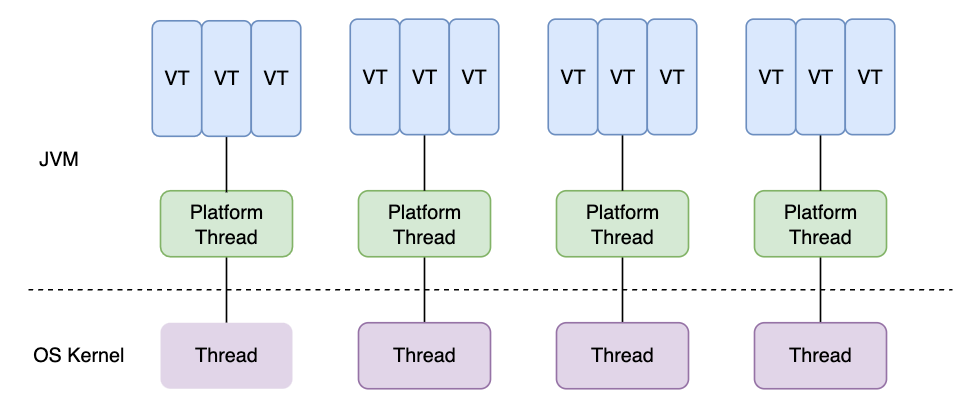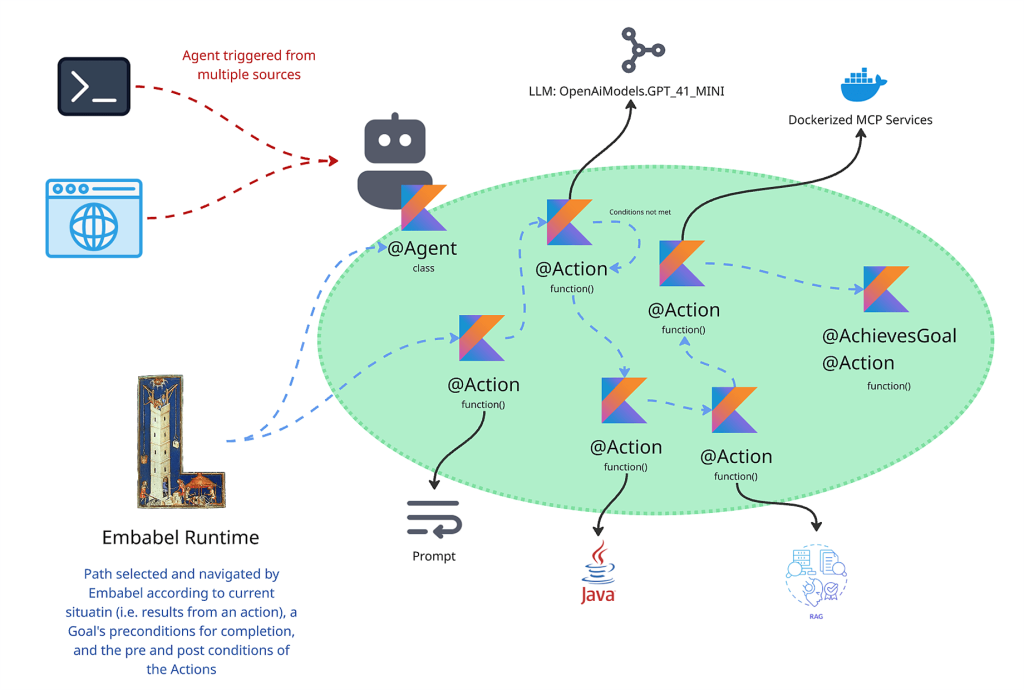Java
Dev
60

Image Credit: Dev
Restarting My Java Journey: From Exam-Oriented Learning to Becoming a Real Developer
- The author reflects on their Java programming journey, starting with exam-focused learning and transitioning to becoming a professional developer.
- Initially, the focus was on passing exams, memorizing syntax, and completing assignments without a deep understanding.
- A shift in mindset led to a decision to restart learning Java with a focus on problem-solving and practical application.
- The author's new approach includes revisiting core Java concepts, practicing advanced Java with real projects, and delving into Hibernate and Spring frameworks.
- Beyond Java, the author aims to grow as a developer by learning software development principles and preparing for interviews.
- The author shares their journey through a blog to stay accountable and inspire other beginners.
- A 21-Day Preparation Challenge has been initiated covering Java concepts, problem-solving, communication skills, and interview readiness.
- The author emphasizes the importance of intent to improve, consistency, and honesty in the learning process.
- The narrative encourages connections and sharing of experiences among individuals following a similar path.
- The journey spans from exam-oriented learning to skill-based learning, highlighting the significance of continuous improvement.
- The author invites engagement and mutual growth within the learning community.
- The journey signifies the importance of transitioning from exam-focused learning to skill-based development for personal and professional growth.
Read Full Article
3 Likes
Self-Learning-Java
68

LangChain4j: Powerful AI & LLM Features for Java Developers
- LangChain4j brings modern AI capabilities to Java applications with a wide range of features.
- Integrations include 15+ LLM providers such as OpenAI, Google Vertex AI, Hugging Face, and more.
- It supports 20+ vector stores like Pinecone, Redis, Chroma, and various embedding models.
- LangChain4j also offers 5+ image generation models and scoring and reranking models for retrieval results.
- Document processing and RAG capabilities involve importing from multiple sources, smart text splitting, embedding generation, and re-ranking.
- AI services and tools provided by LangChain4j include a high-level LLM API, prompt templating, function calling, and text classification.
- The platform offers features for chat and memory management, utilities like output parsing, token counting, and Kotlin coroutine support.
- Multimodal support allows text and image inputs for vision-capable models.
- LangChain4j simplifies the development of AI-powered Java applications, including chatbots and RAG systems, within the JVM ecosystem.
Read Full Article
4 Likes
Self-Learning-Java
208

LangChain4j: Supercharge Your Java Application with the Power of LLMs
- LangChain4j is a Java library that helps developers easily connect their applications with language services like OpenAI or Google.
- It was created in early 2023 to provide Java developers with tools that were previously limited in the language space.
- LangChain4j offers a simple way to connect to various language services and storage providers, reducing the need to learn multiple systems.
- It currently supports over 19 language service providers and more than 20 text storage services.
- The library includes ready-to-use tools for creating prompts, managing chat history, building question-answer systems, and more.
- It also provides easy-to-follow examples and works seamlessly with popular Java frameworks like Spring Boot and Quarkus.
Read Full Article
12 Likes
Medium
129

Image Credit: Medium
How to Set Up a Java Project with Gradle for Beginners
- A Gradle project starts with the root folder where configuration files reside.
- Creating the project folder and populating it with essential files like settings.gradle and build.gradle is essential.
- Initiating a new Gradle project involves using 'gradle init' command in the terminal.
- The generated layout includes build.gradle, settings.gradle, gradlew scripts, and gradle wrapper files.
- Directories like src/main/java/ and src/test/java/ house main Java files and test classes respectively.
- build.gradle file defines project behavior, including plugins, dependencies, and tasks.
- Gradle automates tasks such as compiling Java files, running tests, and creating a JAR file using tasks defined in build.gradle.
- Running Gradle commands like './gradlew build' compiles code, runs tests, and creates a JAR file in the build/libs directory.
- Dependencies specified in build.gradle are automatically downloaded by Gradle and included in the compilation process.
- Gradle simplifies project setup, management, and build processes by following defined structures and configurations.
Read Full Article
7 Likes
Discover more
Dev
385

Image Credit: Dev
Why .NET Maintains Strategic Relevance Amidst Java’s Open-Source Dominance
- Microsoft's .NET ecosystem maintains strategic relevance amidst Java's open-source dominance.
- Institutional investment led to the evolution of .NET Core, enabling cross-platform application development.
- .NET's tooling, anchored by Visual Studio, enhances developer productivity compared to Java's fragmented ecosystem.
- ASP.NET Core excels in runtime performance and scalability for latency-sensitive applications.
- .NET's multidomain ecosystem integration covers web development, desktop apps, mobile development, serverless functions, and game development.
- C# offers modern features like pattern matching, record types, nullable reference types, and LINQ for expressive programming.
- .NET's open-source transformation under the .NET Foundation fosters community engagement and innovation.
- .NET's entrenched industry adoption in sectors like financial services, government, healthcare, and retail showcases its operational trust.
- .NET's architectural innovation, ecosystem expansion, and developer-focused enhancements position it as a future-ready alternative to Java.
- The choice between Java and .NET depends on alignment with project imperatives like maturity, performance, and innovation.
- .NET's journey from a Windows-centric platform to a cross-platform, open-source framework underscores its strategic evolution.
Read Full Article
23 Likes
Medium
363

Image Credit: Medium
Turning a Java List into a Comma-Separated String
- Using StringBuilder to turn a list into a comma-separated string is efficient and memory-friendly compared to string concatenation with + in Java.
- StringBuilder holds data in a character array, avoiding constant object churn and ensuring fast processing even with longer inputs.
- String.join method in Java simplifies joining strings with a delimiter and handles adding the delimiters between items automatically, suitable for cleaner code.
- String.join automatically handles empty lists and different delimiters for various contexts, making it versatile.
- Both StringBuilder and String.join provide ways to create comma-separated strings, with StringBuilder offering manual control and String.join automating the process.
- String.join does not tolerate null values in the input list or array, requiring data cleaning before usage to avoid exceptions.
- In summary, choosing between StringBuilder and String.join depends on the level of control needed and the cleanliness of the input data.
Read Full Article
21 Likes
The Register
49

Image Credit: The Register
Deal to 'save' UK colleges £45M in Oracle Java licensing fees followed audit requests
- Oracle requested Java audits with UK higher education institutions before negotiating a national agreement aiming to save the institutions £45 million compared to standard pricing.
- The agreement involves a national framework agreement for Oracle Java SE, tailored to UK education and research.
- Gartner analysis found Oracle's per-employee subscription model for Java to be two to five times more expensive than the legacy model.
- Jisc negotiated the deal to address cost and compliance challenges faced by higher education institutions using Oracle Java in internal systems.
- The agreement offers a flat annual rate per full-time equivalent employee over five years, capping potential liabilities for Oracle Java users.
- Oracle advised organizations to find open-source alternatives following the introduction of the new Java licensing model.
- Most Oracle users surveyed were unlikely to stick with Oracle Java due to the licensing changes.
- The agreement was developed over 18 months with input from representative bodies and was deemed the most effective approach to secure a collective agreement with Oracle.
- Jisc emphasized the importance of the agreement in reducing costs, driving efficiency, and fostering a strategic relationship with Oracle amid financial pressures.
- Oracle has supported third-party training for Oracle Java but highlighted the need for commercial licensing for institutions running Java in their enterprise systems.
- Financial challenges faced by universities are evident, with many institutions expected to run budget deficits and make cuts.
Read Full Article
2 Likes
Javacodegeeks
306

Image Credit: Javacodegeeks
Java Printing Stack Values Example
- Printing the contents of a stack in Java involves understanding the Last-In-First-Out (LIFO) behavior of the Stack class in the java.util package, which provides operations like push, pop, peek, empty, and search.
- Java's Stack class is versatile for various use cases but is considered a legacy class; it's recommended to use Deque implementations like ArrayDeque for better performance.
- Common stack use cases include parsing expressions, undo functionality, backtracking algorithms, and Depth-First Search (DFS) in graph traversal.
- Different techniques for printing stack values in Java are demonstrated, including toString(), enhanced for-loop, forEach() with lambda, Iterator, ListIterator (for LIFO order), and using a Deque.
- These approaches offer various ways to traverse and print stack elements, showcasing both traditional iteration and more functional styles.
- Comparison is made based on maintaining LIFO order, code simplicity, mutability, and additional notes for each printing approach.
- Understanding these methods helps in writing cleaner code when working with stack data structures in Java, preserving the LIFO order based on specific requirements.
Read Full Article
18 Likes
TechBullion
32

Image Credit: TechBullion
Ashish Mehta: Visionary Technologist and Trailblazer in Java Enterprise Solution
- Ashish Mehta is a highly respected figure in enterprise software development with a strong focus on Java technologies.
- His career spans nearly two decades, during which he has been a driving force in technical innovation across various industries.
- He holds a Bachelor's degree from Rajasthan University and a Master's in Computer Science from Frostburg State University, USA.
- Ashish has obtained numerous professional certifications, including Sun and IBM credentials, showcasing his dedication to continual learning.
- He has held key positions at Metacube Software Solutions, Tata Consultancy Services (TCS), and Kyra Solutions, Inc.
- Ashish's expertise lies in developing and enhancing applications in areas like geospatial technology and environmental solutions.
- His leadership approach involves hands-on technical contributions and strategic guidance to his teams.
- Notable achievements include leading the development of a high-accuracy license plate recognition system and designing critical systems for the Florida Turnpike Enterprise.
- Ashish's work emphasizes scalable and mission-critical solutions, blending technical proficiency with domain knowledge.
- He is adept at integrating diverse technologies and guiding cross-functional teams through agile methodologies.
- His future vision revolves around intelligent systems integration, sustainable technology, and exploring geospatial data analytics.
- Ashish's work embodies the fusion of engineering excellence and forward-thinking leadership, shaping the future of digital governance and infrastructure intelligence.
Read Full Article
1 Like
Medium
177

Image Credit: Medium
New Java 21 Feature : A Guide to Virtual Threads in Java!
- Java has introduced Virtual Threads, a new feature for running multiple tasks concurrently in a simpler and more efficient way.
- Threads in Java are like helper workers that perform different tasks.
- Virtual Threads, part of Project Loom, are lightweight threads created by JVM, enabling the creation of thousands of threads without memory concerns.
- Virtual threads do not block OS threads, use less memory and CPU, and are suitable for I/O-heavy tasks.
- To create a virtual thread, you can use Thread.startVirtualThread(() -> { // Your logic });.
- Virtual threads offer advantages like clean and readable code, simplifying complex thread management, and handling numerous tasks effectively.
- They are ideal for applications handling many users or requests, especially I/O-heavy tasks.
- However, for CPU-intensive tasks, virtual threads may not provide significant benefits.
- Virtual threads eliminate the need for learning complex async or reactive programming and allow efficient handling of tasks.
- Overall, virtual threads are a significant improvement in Java, enabling the creation of clean and efficient code for concurrent processing.
Read Full Article
10 Likes
Dev
372

Image Credit: Dev
Reference Types vs Primitive Types - Java
- Java has both Reference and Primitive types, which handle data storage differently.
- Primitive types store both variable and value on the stack, resulting in a direct copy of values when assigned to another variable.
- Reference types, however, hold references to objects stored on the heap.
- When a reference variable is assigned to another, it copies the reference, not the actual object, leading both variables to point to the same object.
- Changing the object through one variable reflects the change in the other due to the shared reference.
- To create a new object distinct from the original, a new instance must be instantiated, assigning it to the variable.
- This distinction helps understand why changes to one reference variable affect another pointing to the same object.
Read Full Article
22 Likes
Medium
347

Image Credit: Medium
Comparing Java Strings for Matches and Differences
- Java treats strings as objects and offers various methods for comparison like equals(), equalsIgnoreCase(), and compareTo().
- The equals() method compares strings based on character sequence and case sensitivity, returning true if the contents match.
- equalsIgnoreCase() is used for case-insensitive comparisons by adjusting the case of characters before matching.
- compareTo() determines the order of strings relative to each other, crucial for sorting operations.
- == should not be used for comparing string content as it checks memory identity, not character data.
- It is essential to handle null references properly when calling comparison methods to avoid exceptions. Compare carefully and consider missing values.
- compareTo() considers every character, including encoding, and may produce unexpected results due to Unicode values.
- String literals in Java are stored in a shared memory pool, impacting comparison results.
- Manual string interning with intern() can help manage memory but does not alter content for comparison purposes.
- Choosing the right comparison method depends on the specific use case and level of detail required in the comparison.
Read Full Article
20 Likes
Medium
207
Image Credit: Medium
Why Java Continues to Be a Top Programming Language in 2025
- Java remains a cornerstone of software development in 2025, evolving to stay relevant.
- New Java versions introduce features enhancing productivity and application performance.
- Recent versions like Java 21 and 23 added virtual threads, simplified main classes, and more.
- Java is ideal for scalable applications across industries, especially in finance and healthcare.
- Learning Java first facilitates transitioning to other modern JVM languages like Kotlin.
- Java skills are in demand for professionals at all experience levels.
- Java's community support aids learning and career growth for developers.
- Java's age-resistant value and long-term relevance make it a strong career foundation.
- Consistent practice and building real-world projects are crucial for Java developers.
- A program offers a job-focused path with mentorship and real projects for aspiring Java developers.
- Strong fundamentals like Java create lasting careers amidst changing tech trends.
Read Full Article
12 Likes
Analyticsindiamag
16

Image Credit: Analyticsindiamag
Presenting the Winners of the InnovateHER Java Full Stack Developer Hiring Challenge 🏆
- The InnovateHER Java Full Stack Developer Hiring Challenge, held in partnership with Chubb, showcased talent, innovation, and technical depth from women developers across the country.
- The event featured two rigorous rounds assessing core Java concepts and a hackathon to build a retry and replay framework, with the top three winners being recognized.
- 1st Place: Pratheepa impressed judges with her Retry and Replay Framework built with Spring Boot, offering configurable retry strategies and various features.
- 2nd Place: Ramya Gayam's feature-rich Spring Boot application included fixed and exponential retry strategies, Gmail notifications, and Quartz scheduler integration.
- 3rd Place: Rutuja Dattatray Kale developed a job scheduling system emphasizing efficient task execution, logging, error detection, and recovery mechanisms.
- The challenge empowered women in tech, provided visibility for their skills, and enabled engagement with Chubb, a global leader in insurance and innovation.
- A big thank you was extended to all participants for their inspiring passion and talent in the InnovateHER Java Full Stack Developer Hiring Challenge.
Read Full Article
1 Like
Medium
212

Image Credit: Medium
Embabel: Unleashing the Power of Advanced AI Agents in Java Applications
- Embabel, founded by Rod Johnson, aims to simplify AI agent development in Java applications, offering a comprehensive platform for creating goal-oriented agents.
- The platform streamlines AI integration in Java, aligning with established engineering practices and making it accessible for developers.
- Embabel recognizes the need for structured agent behavior, autonomous actions, and goal achievement within applications.
- AI agents play a crucial role in modern software architecture, providing dynamic capabilities beyond simple query-response interactions.
- Embabel introduces foundational concepts like Actions, Goals, and Conditions for structured agent development.
- Embabel utilizes Goal-Oriented Action Planning (GOAP) for sophisticated planning, allowing agents to dynamically formulate plans to achieve goals.
- The platform's key features aim to enhance AI development efficiency, reliability, and integration within the Java ecosystem.
- Embabel's higher-level abstraction focuses on building intelligent agents capable of performing multi-step tasks and dynamic decision-making.
- It challenges the dominance of Python in AI development, enabling Java teams to leverage AI capabilities using existing skills and infrastructure.
- Embabel empowers Java developers to participate in the AI revolution, allowing them to build advanced AI agents and drive innovation in enterprise applications.
Read Full Article
12 Likes
For uninterrupted reading, download the app